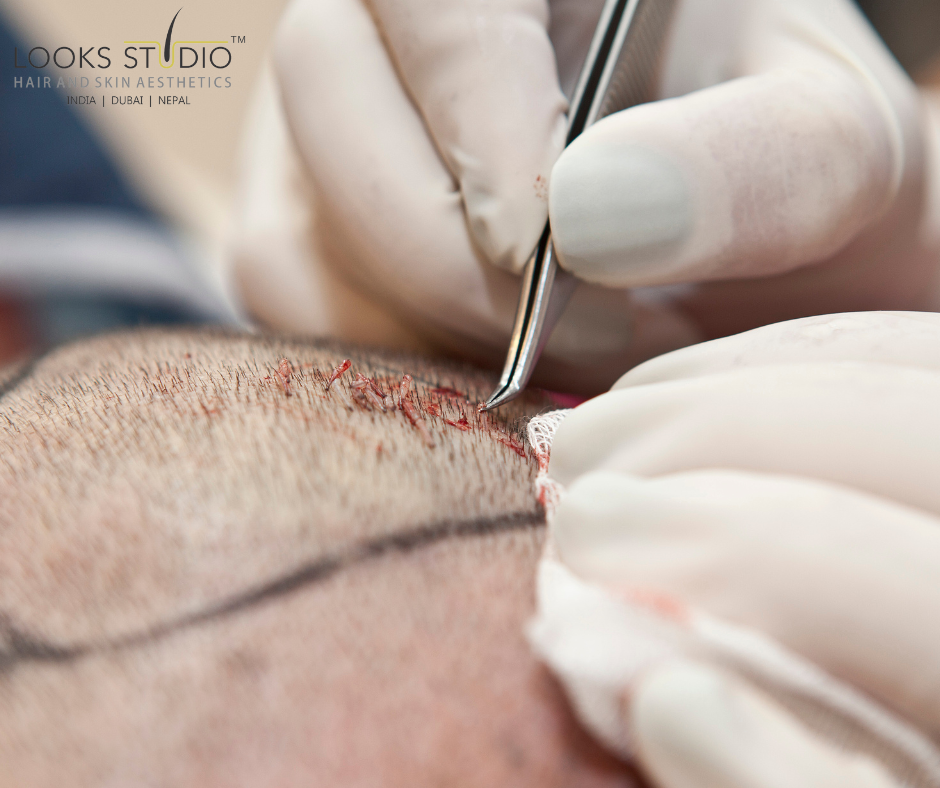Hair Transplant Pain: A hair transplant is a surgical procedure that involves removing hair follicles from one part of the body (usually the back or sides of the scalp) and transplanting them to bald or thinning areas of the scalp. Like any surgical procedure, there can be some degree of pain or discomfort associated with hair transplant surgery.
Hair transplant is done in two ways, FUT & FUE before it was a surgical method and quite painful where the surgeon used to cut a piece of skin from the back of the scalp and then suture it back to get hair follicles to transplant the recipient areas of the scalp.
Clients say that it’s a painful method and there used to be a lot of bleeding and a lot of time to heal up the area. Downtime is always more for clients undergoing the FUT method.

Hair Transplant Pain in FUE
In the year 2000 FUE method started getting popular, it is a non-invasive method and there is no pain involved in the technique.
Developments were constantly on to improve the FUE method even to achieve optimum accuracy.
Since the Bio-Integrated FUE method is an improvised version of the FUE Hair transplant method, micro mini punches are used to extract grafts
Read- Best Clinics for Hair Transplant
Bio-integrated FUE
In Bio-integrated FUE the implanting technique is unique without making prior slits which adds a better comfort zone to the clients that it’s a non-invasive method with no pain again.
The follicles are loaded in the special implanting needles and slid into the Dermis layer of the skin giving depth, direction and denser packing. Since this method is performed with optimum precision and accuracy under local anaesthesia the clients don’t feel any discomfort and the procedure is imparted smoothly giving breaks for snacks and food for the clients.
There is no downtime at all so it’s well-understood that the method is imparted with complete comfort and ease.
Conclusion
In some cases, patients may experience more significant pain or discomfort after a hair transplant.
This can be due to several factors, such as the size of the transplant, the extent of the surgery, or individual pain tolerance.
In these cases, the doctor may prescribe stronger pain medication or recommend other strategies to manage pain and discomfort, such as using ice packs or avoiding activities that can increase blood flow to the scalp.
It’s essential to note that while pain and discomfort can be a part of the hair transplant recovery process, it typically subsides within a few days to a week. Most patients report that any discomfort or pain they experience is outweighed by the benefits of having a fuller, thicker head of hair.


 . Now
. Now